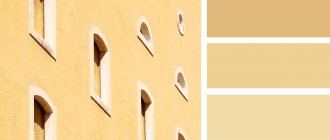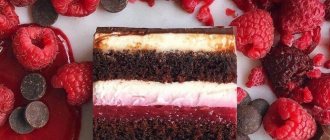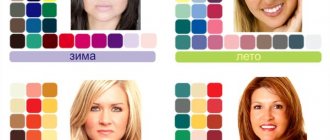It is impossible to overestimate the significance and popularity of the lilac color in various design developments, be it clothing or apartment design. This is the favorite color of the Provence style, a necessary addition to the Scandinavian and high-tech style. It all depends on the fullness and intensity of lilac and its shades. Let's talk about how to get lilac color.
There are many shades: from barely visible white-lilac to deep purple - it all depends on the degree of brightness of the stripe and the sensitivity of the human eye. Some will like the top stripe, some will like the stripe in the center, and others will remain indifferent to the whole range.
What colors do you need to mix to get purple?
Bright purple color is extremely rare in wildlife. All sorts of variations and halftones are much more common. These are flowers of lilac, iris, orchid, wisteria, violet. To learn how to get a lilac color close to natural, it is advisable for a novice painter to study the laws of the color spectrum.
In fine art, to obtain purple, two basic colors are mixed - red and blue. Depending on the proportions, the resulting color scheme goes into a cold or warm range, combining the characteristics of these basic colors.
So, in order to achieve delicate lavender or violet undertones, the resulting color is diluted with white or pale pink. To prepare dark plum, blueberry, blackberry or eggplant tones, on the contrary, you will have to add black or brown pigment to the resulting color scheme.
Using lilac in the interior
This color is very rare in nature, so it is unusual for the human eye and it is easy to overdo it in clothing, interior or design. It gives the room freshness, visually expands the space, creates a feeling of comfort, lightness, and airiness.
There is an opinion that it cannot be used in large rooms, but that preference should be given to smaller ones, as it greatly affects human perception. But the owner’s wishes are much more important. So, if you want to decorate your entire bedroom, living room, or even apartment in this color, don’t be afraid. Unless you live with someone who would be uncomfortable with it.
How to make purple when working with different types of paints
When mixing paints such as acrylic, gouache, watercolor or oil, the master is required to know the structure of each material and the basics of compatibility of shades along the color spectrum. Sometimes it is difficult to create the desired purple shade. For example, to achieve a rich fuchsia tone, you need to know how to brighten the color. Therefore, for each type of paint there are mixing rules that must be followed.
Oil paint
Oil paint has a greasy paste-like structure, forming, when dry, an elastic, dense layer with a stable glossy sheen. She brings richness and depth of shades to painting.
The paint is diluted with a special oil-based solvent. When preparing the desired color, intensive mixing of the components will be required to obtain a homogeneous suspension.
Violet tones are obtained by mixing base colors in different proportions, adding, if necessary, black or white to give them lightness or depth.
To obtain purple color in oil paints use:
| Reds | Blue |
| Kraplak | Ultramarine |
| Kraplak pink | Cobalt |
| Cadmium red | Cerulean |
| Coral pink | Sky blue |
| Cinnabar | Prussian blue |
| Red quinacridone | Royal Blue |
| Pink quinacridone | Indanthrene |
| Neapolitan pink | Blue "FC" |
| Petersburg pink | Chrome-cobalt blue-green |
Using acrylic paint
Acrylic has a dense, elastic structure and good hiding power. Diluted with water or a special organic product. When dry, it gives a smooth, glossy surface that is highly resistant to external influences, including moisture. Acrylic does not fade or crack for a long time.
You can find out which paints to mix to get a purple color from the table:
| Reds | Blue |
| Alaya | Sky blue |
| Cinnabar | Cerulean |
| Cadmium red | Cobalt |
| Bordeaux | Ultramarine light |
| Carmine | Blue "FC" |
| Kraplak | Indanthrene |
| Light pink | Turquoise |
Watercolor
It is more difficult to achieve pure purple when working with watercolors. Since this paint, having a transparent structure, is diluted abundantly with water, achieving a bright shade is not easy. This shortcoming of artistic watercolor is compensated by a wide palette of shades based on basic colors, when mixed, the desired color of different saturation and tonality is obtained. Sometimes, to obtain delicate lilac undertones, artists mix white gouache to watercolors.
To obtain purple in watercolor use:
| Reds | Blue |
| Alaya | Ultramarine |
| Ruby | Cerulean |
| Carmine | Cobalt |
| Cinnabar | Prussian blue |
| Bordeaux | Azure blue |
| Pink | Varnish blue |
| Cadmium red | Turquoise |
| Kraplak | Bright blue |
| Red quinacridone | Indanthrene |
Mixing gouache
Unlike watercolor, gouache has a thick matte structure. The paint is opaque and has good hiding power. When dry, it is easily diluted with a small amount of water. Even a child can cope with obtaining the necessary color scheme. As in other cases, you need to take two primary colors and, if necessary, add a little white or black to the resulting one (depending on whether the initial shade is needed - darker or lighter).
What colors need to be mixed to obtain the desired shade are shown in the table:
| Reds | Blue |
| Cinnabar | Iron azure |
| Alaya | Ultramarine |
| Kraplak | Cobalt |
| Carmine | Turquoise |
Application of color
With the help of color, you can bring absolutely any designer’s idea into reality. The process of combining paint products and color pigments is called tinting.
Using tint you can get quite rare paint colors such as gold, silver, copper or bronze. Paint mixed with color can be used to treat the following types of surfaces:
- Concrete.
- Brick.
- Plaster.
- Drywall.
- Tree.
- Chipboard and fibreboard.
The use of a pigment composition will be needed in the following cases:
- Defects when applying the first coat of paint.
- A shade that matches the designer's idea is required.
- To decorate the walls, several tones of the same color are required.
- Lack of previously used paint in stores.
- In case of an error when choosing a paint color in a store.
You can mix colors with paint either at home or by turning to professionals. Color selection and mixing can be done using computer technology.
If you decide to prepare the paint yourself, then mix the ingredients thoroughly, avoiding uneven coloring of the base.
How to get different shades of purple
Purple has many variations and derivatives.
To achieve different undertones to the base color, you need to add some black or white, and for some warm tones, yellow or brown.
For example, to get purple, a small amount of yellow is added to the base color, and when you add a drop of brown, you get a noble eggplant color.
Shades of purple: palette, color names
Like any color in the palette, purple has light, bright and dark shades that have their own characteristics. The Panton palette contains 196 variants of violet, light - from pale lavender to violet, dark - from iris to black grape.
The tone can be rich or dull, with purple, azure, lavender, pink, lilac and even grayish notes.
“Panton” palette
The main shades of purple include the following:
- lilac - a violet color diluted with white, obtained from a combination of 2 basic colors in different proportions (received its name from the shrub of the same name);
- iris - a bright, rich color named after a common garden flower;
- indigo is a bright blue with a purple tint, named after the plant Indigofera tinctifera, the dry leaves of which are used to prepare a coloring pigment;
- purple is a mixture of red and blue, the variety of halftones of which depends on the proportions of the primary colors, which go into a warm or cold palette;
- lilac - purple strongly diluted with white (with the addition of gray);
- eggplant - a complex version of dark purple with brownish notes, reflecting the color of the skin of a ripe eggplant;
- blueberry - a deep and dark blue-violet tone, named after the wild berry;
- lavender - a delicate lilac undertone with light pink notes, named after the flower of the same name;
- plum - a warm matte shade of purple, named after the fruit of the same name;
- grape - dark rich tone, close to black, named after black grapes;
- amethyst is a moderate purple color named after the semi-precious stone of the same name;
- glycine is a medium-light shade of purple that takes its name from the common garden flower, wisteria;
- fuchsia is a deep purple color named after a flower native to South America;
- orchid - pink-lilac halftone, named after the flower of the same name;
- blackberry - a cool, rich shade (a mixture of muted purple and indigo), named after the wild berry;
- violet is a tone that has several gradations - from very pale to bright, saturated tones, named after the home flower of the same name.
How to make light purple shades
Instructions for preparing light colors:
- lavender is obtained by mixing lilac with soft pink;
- purple can be obtained by adding white paint to rich purple;
- Lilac is obtained by mixing base violet with titanium white.
How to Make Dark Purple Shades
Instructions for preparing dark tones:
- plum is obtained by mixing red, blue, white and black;
- eggplant is obtained by adding brown and white to muted purple;
- blueberry is obtained by mixing bright indigo with black.
Colorant for water-based paint
If you need to purchase a color for water-based paint, then pay attention to the paste-like color for universal use.
Paste color is much easier to use, but you must mix it thoroughly with the base, otherwise you risk getting different color intensities when painting.
Video: how to get purple color
Table for obtaining purple shades when mixing colors
To obtain the desired shade, strict adherence to proportions is necessary when mixing primary and additional colors.
How to make the desired color is shown in the table.
| The desired shade | Mixable colors | Proportions |
| basic violet (BF) | red + blue | 1:1 |
| dark purple | BF + black | 1:0,5 |
| light purple | BF + white | 1:0,5 |
| red-violet | BF + red | 1:1 |
| lilac | BF + white | 1:1 |
| lavender | lilac + white + red | 1:1:0,5 |
| purple | BF + yellow | 1:1:0,5 |
| indigo | BF + ultramarine | 1:1 |
| iris | BF + indigo + white | 1:0,5:0,2 |
| fuchsia | purple + indigo | 1:0,5 |
| plum | BF + black + white | 1:0,2:0,2 |
| bilberry | indigo + black | 1:0,2 |
| lilac | purple + white + gray | 1:1:0,2 |
| eggplant | purple + white + brown | 1:0,2:0,2 |
To obtain the desired shade, paint should be mixed gradually. The main rule: you can always add the missing amount, but it is unlikely that you will be able to remove the excess.











